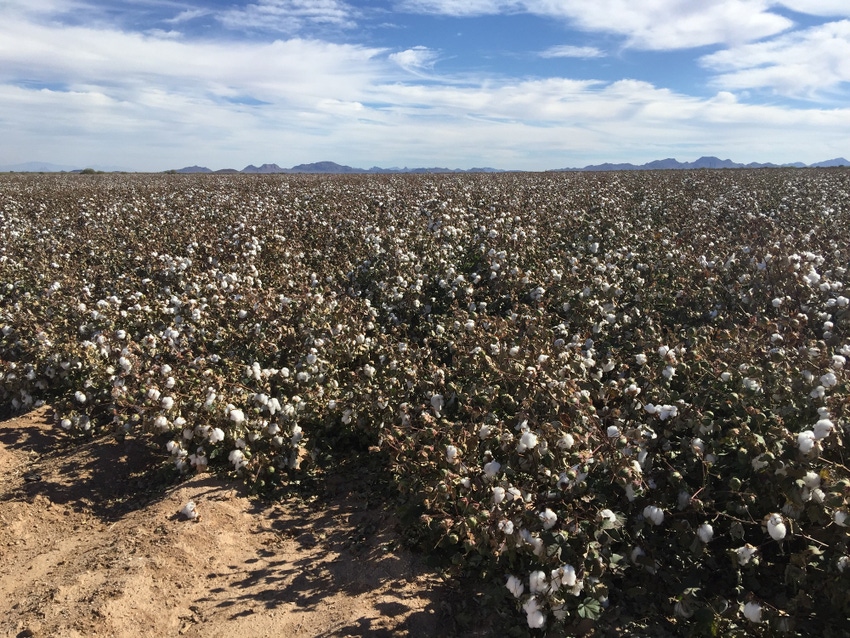
Paul (Paco) Ollerton, Arizona Cotton Growers Association president (and 2018 Board of Directors member of the Cotton Council International), and ACGA Executive Vice President Kevin Rogers expect Arizona cotton acreage to increase this year, but they point to eight factors that could sway decisions one way or the other.
They say a lot of grower re-evaluation focuses on these eight components:
LABOR — “There’s a shortage everywhere, not just in agriculture and cotton,” Ollerton admits. “H2A doesn’t work for us, so hopefully we’ve got a fix coming in a guest worker program. Something needs to be done if we’re going to continue to grow the economy.”
DISEASE— “Every year you wonder what the next disaster will be and then you persevere. There’s a lot of stuff out there on the fringes we’re keeping an eye on, like Fusarium Race 4 soil fungus that has had a growing impact on California farmers since the 1990s.”
PESTS — “You never know when you’re going to hit that wall on insecticide resistance. There’s always something new coming along that can bite you in the backside, and it’s getting harder and harder to get new chemistry registered through the EPA.”
TECHNOLOGY — “Arizona’s cotton farmers depend on emerging technology to successfully grow their crops,” says Rogers. “If we hadn’t had technological help, we’d have been out of business years ago.”
ACREAGE — “While the numbers of small-acre farmers (one- and two-acre tractor farmers) is increasing, the number of growers in Arizona — general production agriculture at the commercial level — has decreased. But our acreage and yield stay pretty much the same.”
WATER — “We continue in a drought, watching water levels irrigated out of the Colorado River and the CAP or other aquifers such as the Salt River Project. But we know what we’ve got for this year as allotments have been set. It’s 2019 and 2020 crops we’re concerned about. Guys are trying to match specific crop acreage against their allocations, and more money is going into sprinkler and drip irrigation. Water is probably our No.1 issue.”
LEGISLATION — “We’re in the middle of farm bill time for the 2019 crop, and that’s going to dictate a lot of the future for our guys going forward,” admits Rogers. “Recent congressional passage of the spending bill has been positive. Everybody’s on an upbeat note at the moment.”
PRICING — “It’s all driven by sheer economics, and it’s a mixed bag,” says Ollerton. “Compare price fluctuations in alfalfa and corn silage for the dairy industry against cotton prices. If cotton goes to $1.25 in Year 2020, and alfalfa is at $120 a ton, a guy’s going to plant cotton. But I don’t think I’ve ever seen anybody take out a stand of alfalfa after a year just because the price of another commodity rises a bit. It boils down to basic economics and the price of cotton.”
2018 plow down in the Yuma area got underway at the start of the year and cotton is already up there, while February 15th was mandatory plow date in Maricopa and Pinal counties. So the race is already on to see what variables will be encountered before picking this fall. As days tick off the calendar, members of the Arizona Cotton Growers Association remain optimistic.
About the Author(s)
You May Also Like




